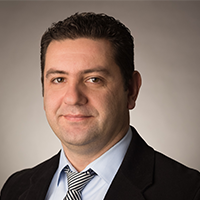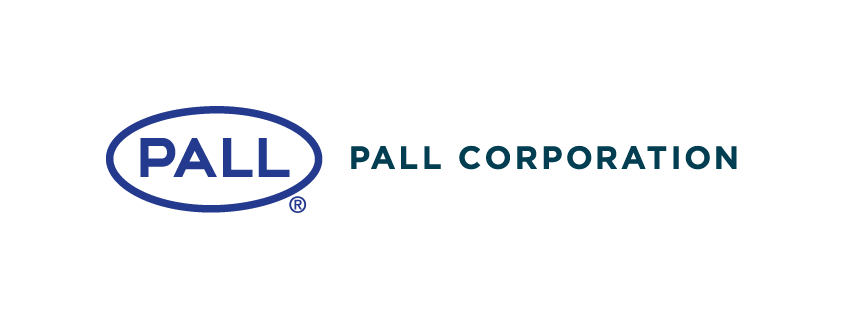Maximizing efficiency & flexibility in viral vector manufacturing scale-up
Cell & Gene Therapy Insights 2023; 9(1), 165–179
DOI: 10.18609/cgti.2023.025
Elisa Manzotti, CEO and Founder of BioInsights, speaks to four of Pall’s biotechnology experts from across the field of gene therapy manufacturing – Denis Kole, Jon Petrone, Marc Bisschops & Nathan Hazi –about how to optimize and scale viral vector production by utilizing efficient technologies and platform processes.
Read the the interview below or listen to the podcast here.
If you enjoyed this episode, you can listen to all episodes from The BioInsights Podcast wherever you normally get your podcasts.
Follow the Podcast to make sure you don't miss the next episode.
Let’s begin with the key challenges in viral vector processing and in particular, those relating to scalability – what would you each pick out as the most significant pain points for the gene therapy sector at present, in your various specific areas of expertise?
MB: In the regulatory part of the drug discovery and development program, there is a challenge in the industry to find a clear definition of the so-called quality target product profile (QTPP). This is essential to defining the critical quality attributes (CQAs) and the critical process parameters (CPPs) later on and needs to be well described in the chemistry, manufacturing and controls (CMC) section of your regulatory filing.
The analytical support for process development manufacturing is being established. However, there is still a lot of work to be done before we can have the proper characterization of these therapeutic entities, which is essential for adequate process development.
DK: There are a few challenges faced during viral vector processing, which vary in significance depending on the type of viral vector. Many of these challenges are related to the complexity and diversity of advanced therapeutic medicinal products (ATMPs). Solutions and alternatives need to be considered to achieve the required productivity and CQAs.
For example, for adeno-associated viral (AAV) vectors, process reproducibility and scalability of the triple transient transfection process, in order to produce a product with consistent quality attributes, is a challenge that needs significant development work at bench-scale. A well-considered strategy for scaling up to commercial manufacturing would allow us to produce robust process control and batch-to-batch consistency.
A low percentage of full-versus-empty capsids, and overall heterogeneity in product and product-related impurities produced within the bioreactor, are other challenges that can impact commercial manufacturing process design and scale. The separation of impurities and the enrichment of full-from-empty capsids are critical for successful AAV production, as empty capsids are considered as process-related impurities that need to be removed (or reduced in level) during the purification process. This becomes more complicated for viral vectors where current processes result in inconsistent impurity profiles. Extensive process development efforts are required to establish a process control strategy that ensures we can consistently achieve the target quality attributes of the product.
In addition, we cannot ignore the high cost of goods related to producing viral vector therapies. This is especially true for triple transfection processes, where the cost related to securing GMP-grade plasmid DNA and transfection reagents becomes a significant burden.
Lentivirus (LV) processes typically suffer from low viral yield during upstream processing and poor recovery rates during downstream process steps. This is mainly due to viral stability and the sensitivity of viral particles to physical and chemical stress.
Finally, there is a lack of availability of robust, accurate, and rapid-turnaround analytical assays. This complicates in-process sample testing and batch release testing as existing analytical assays require extensive development efforts, are typically time-consuming, and may result in delayed timelines.
NH: From an upstream perspective, one of the first challenges of scaling up a viral vector process is deciding what platform you want to use at your production scale. Ultimately, you need to choose a platform that meets your commercial yield requirements, CQAs, and company timelines, all while giving you an economical process yield.
From these high-level requirements, you must then start narrowing down your options. Should you use an adherent or suspension platform? What production scale bioreactor size will you need? What production mode will you need? Are there promising new technologies or techniques available? Some of these decisions will likely be made for you based on your intellectual property and what you have demonstrated at the research and discovery phase. Once you start to formulate your vision of what your process will look like at the production scale, it is a matter of making a plan to reach that final production process. This might seem like a daunting task, and it is where a knowledgeable industry partner can be helpful.
Focusing on the upstream process, what have been the most significant technological advancements that are delivering the cost-effective yield and titer improvements required by industry?
NH: We are seeing improvements in several areas. At the bioreactor level, adherent bioreactor options are expanding in terms of the diversity of capabilities, features, and sizes.For suspension bioreactors, there is a growing interest in a variety of automated tangential flow filtration (TFF) based perfusion systems that allow higher density cultures. Early results with some of these devices look extremely promising for intensifying viral vector processes.
At the process analytical technology (PAT) level, we are seeing increasing interest in dC02 probes for better process control, and wider utilization of capacitance-based biomass probes for monitoring biomass and informing real-time process decisions. We are even seeing this sort of approach for real-time monitoring of envelope virus production in the bioreactor, which is a cutting-edge technique.
At the reagent level, there is a growing field of novel transfection reagents, beyond polyethylenimine (PEI), that offer improvement in particular applications. There are also a variety of small molecules that enhance transfection or infection efficiency and productivity. Cell-line development continues to improve suspension-adapted cell-line productivity, and stable cell lines will continue to increase in popularity. Innovation in viral vector and capsid engineering is allowing for higher empty-to-full ratios and improved viral tropism and specificity. Whilst not strictly an improvement to the yield, this does reduce the required dose and batch sizes.
DK: The field of ATMPs, even though it is young relative to more traditional therapeutic modalities, has made some significant advances driven by the need to tailor solutions to the unique requirements of viral vector process development and manufacturing. The development of serum-free and animal component-free media, and the offerings by several vendors targeting the development of custom media for viral vector applications, can have a positive impact on minimizing lot-to-lot variability, improving the safety of viral vector therapies, and achieving better productivity.
In addition to this, smart process development approaches using a design of experiment (DoE) approach combined with scale-down modeling, as well as the advancements in the field of digital twin utilization, will continue to offer opportunities for further process improvements, and carry the potential to reduce overall cost for viral vector-based therapies.
What is the availability of genuinely scalable upstream process machinery such as bioreactors in the therapy space, and what can be done to ensure optimal consistency through scale-up/out into and through bioreactors of differing volume?
NH: I do not think it is possible to have a perfectly scalable bioreactor family. It is hard to make scalable equipment that does not have to abide by some constraints of physics, engineering, or manufacturing. This does not mean that scalability is all guesswork, though. A well-designed bioreactor family has adequately wide design space at the production scale, which is matched on the smaller scale systems.
It is important to understand the limitations of your production-scale equipment and to design a robust bench-scale process that resides within the boundaries of the production-scale. Technical support scientists from the equipment manufacturers are a great resource for providing a treasure-trove of experience and knowledge, which when harnessed, can shorten development times significantly.
Regarding the question of scalability from the smallest flasks to the production scale: I often see that viral vector proof-of-concept processes are hastily developed in unrefined, uncontrolled T-flasks or spinner flasks, and there are frequently hurdles in going from this proof-of-concept scale to the first benchtop bioreactor. Once the process is in that first controlled bioreactor, scaling up to larger sizes is much more easily managed.
Overall, I would say that this issue is becoming less of a problem as the viral vector industry matures, but it is still a potential pitfall to be aware of. I would recommend starting to use a bioreactor as soon as possible.
MB: A quality by design (QbD) approach can be helpful in this endeavor, as it allows you to focus on quality during the technology transfer and scale-up of these processes. A perfect scale-up does not exist, but focusing on what matters in your upstream process can help reduce variability and build a more consistent process as you scale up and tech transfer to other facilities.
QbD has often been used for recombinant proteins and monoclonal antibodies (mAbs), and more recently, for viral vector downstream processing. It is good to see that more effort has recently been made to define the QbD space for upstream process cell cultures, both adherent and suspension. This will help considerably in building more consistent processes and delivering more consistent product quality moving forward.
What is next for transient transfection given the potential challenges that may arise at larger scales?
NH: Transient transfection has traditionally been the workhorse of the viral vector industry, and for good reason. As the industry emerged, scientists needed a system of vector production that was fast, nimble, and flexible, which is exactly what transient transfection offers. It can be used with adherent or suspension cultures, it allows for easy swapping of a gene of interest or capsid plasmid, and it is much more scalable than other transfection methods that are limited to small scales. If time to market is a primary objective in upstream development, transient transfection is there to answer the call.
However, there are some limitations. The challenges of transient transfection are well understood – mainly cost, operational complexity, reproducibility challenges, and a lack of institutional knowledge. Plasmids and transfection reagents are expensive. It is difficult to handle large volumes of reagents during the complexation and transfection steps within appropriate timeframes. Deviation from consistent execution of those steps can lead to poor reproducibility between batches. Additionally, due to the multitude of parameters involved in transfection, it can be hard to predict the optimal transfection parameters for a new process. This often requires complex DoEs, which can be laborious and are not high-throughput in those cases where scale-down models are not fully representative of the production scale system.
We will see improvement in transient transfection, however; I am encouraged by the growing availability of new transfection reagents, which are specialized for certain applications. There are also novel transfection-enhancing small molecules starting to appear on the market that look promising. There is a growing knowledge base about ideal complex sizes and how to routinely achieve them. I am hopeful that we will soon see some products that will allow us to consistently perform transfections at large-scale.
The challenges of transient transfection do create some pressure to move beyond it. Stable cell lines will have a growing presence in viral vector production, because the technology offers improved simplicity, reproducibility, and hopefully, productivity. One such example is CEVEC’s inducible stable cell line for AAV, which accommodates the project-specific transgene and capsid gene and delivers a top monoclonal producer single-cell clone. There is a lot more information available on this topic, and I would recommend listening to the Cell and Gene Therapy Insights interview with CEVEC, published in 2021.
Transient transfection has a firm footing in the viral vector manufacturing space, and we will continue to rely on it in the future. But there will be instances where it makes sense to switch to a stable cell line, particularly for the larger clinical indications that require the large yields.
Enabling viral vector process intensification is a particular point of focus for the field at present – can you provide some pointers to an optimal approach in this regard? For instance, how to enable viral vector process intensification at smaller scales?
MB: Process intensification has multiple dimensions to it. Often, we look at the specific productivity of each of the primary unit operations, which is expressed as the amount of product produced per unit volume per unit of time. But this approach sometimes ignores the other dimensions involved in biomanufacturing, such as the impact of buffers and consumables, which can add to both the complexity and the footprint of the total operations.
Furthermore, once at the manufacturing scale, other bottlenecks appear. One of those bottlenecks, which I refer to as ‘the invisible elephant in the cleanroom’ is that the amount of data being produced often becomes a burden because it is scattered across many systems and sources. What is more, these varied data come at a relatively high speed. We often see that manufacturers can produce a batch of drug substance in a few weeks, but then the release of the batch report can take multiple months because all that information needs to be populated in a single document. You cannot release the drug substance without that batch report, so that becomes a challenge that we cannot ignore in the field of process intensification.
Last but not least, the journey from discovery to development to clinical or commercial manufacturing comes with certain risks. This is where people can lose a lot of time. A holistic approach to process intensification covers all of these aspects, while at the same time reducing complexity and with that, risk of operator error.
It has been said that continuous bioprocessing could be a way to enhance process intensification, including for viral vectors. Although I am a great fan of process intensification through continuous bioprocessing, it would require analytical support and robust product characterization to be in place before you can embark on that journey. I think it will take a bit more time before we reach that point for viral vector manufacturing. Having some further progress on that end will enhance process intensification. For now, we should look at making it easy, simple, and robust.
JP: From the downstream perspective, there are opportunities to link unit operations, reduce process volumes, and shorten process times. An in-line concentrator or a single-pass TFF device can be linked to the clarification, depth filtration, operation to reduce the volumes and the required liquid storage tankage.
The implementation of Mustang Q membrane adsorbers with their large open pore structure relative to chromatographic resins allows higher binding capacities of large viral vectors. The Mustang Q also operates at flow rates of 5–10 membrane volumes per minute, which is about 40 times the linear velocity of what can be achieved with a column operating at a four-minute residence time.
In process development, we can run experiments in 10–15 minutes. This means you can run 20–30 runs per day to enhance your knowledge base. At manufacturing scale, the reduced processing time of Mustang Q can minimize damage to labile vectors such as LV, whilst reducing buffer and waste volumes.
How well are the current range of purification technologies performing in terms of streamlining viral vector downstream processes whilst improving recovery? And how/where can we do better?
MB: The viral vector manufacturing industry has inherited many of its technologies from the manufacturing of recombinant proteins and mAbs. That has been the name of the game, and it has been quite successful.
However, it is necessary to consider that these technologies are not tailored to the specific needs of vector manufacturing. That relates to both the scale of the equipment and the performance of materials and absorbers used. Ignoring the specific attributes of viral vectors such as the sensitivity of lentiviruses or the sheer size of some viral vectors, leads us to slightly less efficient processes than we would want. There is room for more robust downstream processing if we can develop more appropriate filters and absorbers to handle these viral vectors.
Development in analytical support will help us to achieve more robust downstream processing, too. In order to develop a purification process, you firstly need to understand what you are doing, which requires fast and robust analytics. The accuracy and speed are not there yet – there is some room for improvement on this end.
JP: With labile vectors such as LV, traditional TFF operations can degrade vector quality over time. For stable productions like mAbs, the CPPs for TFF such as crossflow rate and transmembrane pressure are scouted in a single experiment performed in total recycle with the retentate and permeate streams directed back to a well-mixed feed tank. However, with labile products, this CPP scouting process may need to be conducted in a series of full TFF runs at the desired process conditions in a DoE fashion.
Another challenge is the variability in assay results – for example, +/- 10–20% is not uncommon for ELISA and quantitative PCR assays. This can affect the number of necessary replication runs to judge the performance of the different operating conditions. Another option is to run with single-pass TFF, which operates at reduced feed flux to minimize shear on the labile product, and with a single pump pass. This can allow the viral vector concentration to be achieved with high yields. If diafiltration (buffer exchange) is required, an in-line diafiltration device or a hybrid single-pass TFF approach can be implemented to achieve the high product concentration goals, perform the desired buffer exchange, and achieve high yields in the process step.
No discussion of AAV vector manufacture feels complete without some coverage of empty/full/partially full capsid ratio and its impact on gene therapy safety and efficacy – what is your take on how best to improve this ratio through process innovation and optimization?
DK: Achieving poor and varying levels of full-versus-empty capsids during upstream process production creates bottlenecks that complicate the AAV manufacturing process. A lot of great work has been done to improve upstream processes and increase full capsid production. However, for existing processes, separation and enrichment of full-from-empty capsids needs to be achieved during downstream processing, as empty capsids are considered impurities that can affect the efficacy and safety of therapies.
While affinity chromatography is widely used and can generate high yields of recovered AAV, it lacks the ability to separate empty from full capsids. Ion exchange chromatography (IEX) is currently being used as the method of choice to separate full from empty viral capsids. Any processes that need to go to commercial manufacturing scale typically rely on anion exchange chromatography (AEC). However, significant development work is required at the bench scale before advancing these processes to a larger scale and commercial manufacturing. In most cases, these types of approaches do result in low full capsid recovery, at the expense of removing empty capsids.
There are a few new approaches that are utilizing the use of IEX absorbance, such as the Mustang Q and Capto Q, which resulted in a few improvements in full capsid enrichment. Some great work has been published in the last few years by Pall’s Applications R&D team, who have described the separation of full-versus-empty capsids using an approach where a 1 mS/cm conductivity step gradient is used to allow for high-level enrichment of full capsids. The Cytiva team has also published data on the use of Capto Q Impress resin with dextran surface extenders, and the use of magnesium chloride and elution salt to significantly improve capsid recovery and purity.
However, considering the need for further process improvements, it is important to explore innovations that target upstream processing as well as downstream process steps. It would be possible to start as early as the capsid engineering stage by looking into cell line selection to improve full-to-empty ratios, and exploring opportunities for using producer cell lines.
Improvement in the upstream process holds the key to reducing operating scales and costs, thus enhancing productivity and safety. These improvements will open doors to the development of more viral vector therapies for ultra-rare diseases, which currently can be cost-prohibitive. Incremental improvements of existing downstream processes, as well as research into new materials and single-use solutions, are needed to achieve the productivity, product quality, and cost reductions required to make viral vector therapies more cost-effective and available to wider patient populations.
Standardized vector platform processes are another red-hot topic at present – can you tell us about Pall’s approach in this regard and what differentiates it?
DK: Looking at the approaches that are used to manufacture more traditional biologics such as mAbs, we can quickly identify many benefits that a platform solution offers. These include standardization of the manufacturing process, improving timelines, process streamlining, increasing operational flexibility, and reducing process risk whilst also improving supply chain and overall plant flexibility. It makes sense to think along similar lines for the production of viral vector therapies.
As a leader in bioprocess solution offerings with a wide range of technologies available for upstream as well as downstream production, Pall is perfectly positioned to support platform solutions for viral vector processes. On the upstream side, we offer automated bioreactors for adherent as well as suspension processes, which cover a wide range of scales from benchtop systems for process development approaches up to and including commercial manufacturing. On the downstream side, there is an extensive portfolio of single-use, modular technologies, many of which have been designed and developed specifically for viral vector processes. In addition to this, we have a widely established knowledgebase across many viral vector types and modalities, through hands-on internal R&D applications work that the process development services team has conducted in collaboration with our customers, and the field application support teams that work on customer processes at their sites. This places our teams in a unique position to offer both a wide range of equipment and consumables to support these platform solutions, and also have the experience of working directly with therapy developers and contract development and manufacturing organizations to optimize platform solutions for specific applications.
What are the minimum process parameters needed to build a platform viral vector process?
DK: To build a platform viral vector process, it is important to have a complete understanding and control of the CPPs that affect the CQAs of the product, and a good understanding of the flexibility as well as the limitations of the selected equipment.
In general, that includes determining the process parameters that control upstream culture conditions, such as the transfection or transduction efficiency, to ensure that the viral vector quality, impurity profile, and viral titer are consistent between batches. Determining and controlling the process parameters that ensure you are operating within the design space required to achieve viral vector quality, purity, recovery, and potency should be applied to all unit operations on both the upstream and the downstream steps.
Finally, the second ‘elephant in the room’ is developing robust analytical assays that allow us to determine the quality profile of the product (including the purity, potency, stability, and aggregation of viral vectors) throughout the production system and in real-time.
Overall, it is extremely important to marry together process development at the bench with the process design for manufacturing-scale operations, as well as the selection of the equipment and solutions to be used for the process. This approach then allows us to design a robust process control strategy that we can scale up and down, which will result in minimal batch-to-batch variability and ensure the product’s CQAs can be achieved.
MB: A focus on the concept of QbD is something I strongly support. It is extremely important to adhere to the philosophy of QbD and look at CQAs to design your process around CPPs.
To address manufacturability challenges, such as pressure drops and yield loss, there is a set of key process parameters that do not necessarily affect the CQAs, but which are still extremely important for developing a scalable and robust manufacturing process that delivers the required yield. As we scale up, this is something that should be included in the parameters that need to be characterized and controlled.
What does it mean to scale-up to products destined to only treat dozens of patients rather than hundreds or thousands? Can you automate cost effectively in that scenario, and if so, how?
DK: The commercialization of viral vector therapies and ATMPs in general has changed how we think about commercial-scale manufacturing for these therapies. This is mainly because manufacturing capacities and capabilities required to produce these classes of therapies are different from the traditional biopharma facilities, built to accommodate processes for thousands of liters of feed streams that need to be executed downstream.
Many cell and gene therapies target smaller numbers of patients and as a result, they require operations to be executed at much smaller scales. This, in turn, can be challenging as many of the available equipment, solutions, and automation, needs to be repurposed and may not be an optimal fit. However, the field is considering these challenges. We have already seen many solutions developed in the last few years, specifically for viral vector processes, that are now being used for the manufacture of commercialized viral vector-based therapies.
A great example is the use of automated, single-use fixed-bed bioreactor systems like the iCELLis, which offers opportunities for better process control, reduced handling, and reduced overall risk, compared to more laborious processes that require intensive manual manipulation and a significantly higher footprint to operate.
MB: It is ofwten thought that automation makes less sense for gene therapy applications that target smaller patient populations. I would argue that this is untrue. It is true that automation helps in routine manufacturing, but when manufacturing is less routinely completed, such as for gene therapy applications, the chance for operator error is high. This is where automation can truly help.
Automation helps in the gathering, collecting, and controlling of data produced in gene therapy manufacturing. That is an area that does not scale with the size of the batch. In smaller batches, the effort to produce the batch reports required to release the drug substance remains the same, so having a proper digital infrastructure with automated systems to help collect data, still makes sense. This will enable you to move through the process of populating and releasing the batch reports quickly.
Affiliations
Denis Kole, PhD
Director, Accelerator Process Development Services (PDS),
Pall Corporation
Jon Petrone
Senior Director, Scientific and Laboratory Services,
Pall Corporation
Marc Bisschop, PhD
Vice President, Manufacturing Sciences and Technologies (MSAT),
Pall Corporation
Nathan Hazi
Bioreactor Applications Team Manager
Pall Corporation
Authorship & Conflict of Interest
Contributions: All named authors take responsibility for the integrity of the work as a whole, and have given their approval for this version to be published.
Acknowledgements: None.
Disclosure and potential conflicts of interest: The authors disclose that Pall Corporation owns patents relevant to the Biotech Industry.
Funding declaration: The authors received no financial support for the research, authorship and/or publication of this article.
Article & copyright information
Copyright: Published by Cell and Gene Therapy Insights under Creative Commons License Deed CC BY NC ND 4.0 which allows anyone to copy, distribute, and transmit the article provided it is properly attributed in the manner specified below. No commercial use without permission.
Attribution: Copyright © 2023 Pall Corporation and Pall Medistad B.V. Published by Cell and Gene Therapy Insights under Creative Commons License Deed CC BY NC ND 4.0.
Article source: Invited. This article is based on Podcast which took place on Feb 15 2023.
Podcast recorded: Feb 15 2023; Revised manuscript received: Feb 28 2023; Publication date: Mar 8 2023.





